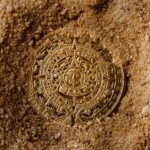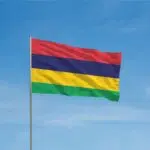Aztec New Year in Mexico falls on March 12 every year. It signifies the start of the New Year according to the Aztec calendar. We often imagine time as a linear concept — a straight line running from point A to B. The Aztecs took a radically different view. Time was a force. It provided energy and change. Time was often a harbinger of miracles. The Aztecs viewed it through a lens of continual creation, destruction, and regeneration. Given the ebb and flow of life itself, we think they were spot on. Aztec New Year celebrates an ancient culture whose ideas still find resonance today.
History of Aztec New Year
Falling on March 12 each year, the Aztec New Year celebrates the start of the year according to the Aztec Calendar. It’s a date with plenty of symbolism, traditions, and celebrations. The holiday is special to Nahua communities in Mexico — groups of indigenous people who live in Mexico and parts of El Salvador. In the original Nahuatl, the holiday is called ‘Yancuic Xihuitl.’ Nahuatl is a fascinating language with numerous dialects and has Uto-Aztecan roots. The Nahua communities today speak a mix of both Nahuatl and Spanish.From 1300 to 1521, the Aztecs rose to power and influence as the center of Mesoamerican culture. They followed the Mexica or Aztec calendar — a 365-day calendar cycle comprising two parts that ran simultaneously. The first was the year count or xiuhpohualli. The second was tonalpohualli, or ‘counting of the days’ — a 260-day ritual cycle.Yancuic Xihuitl celebrations today usually take place the night before, on March 11. Expectedly, the celebrations are spectacular. Cities like Nuapan, Huauchinango, Xicotepec, Zongolica, and Mexico City organize numerous events on this day.Celebrations commence with ceremonial dances and songs set to the beat of traditional drums. Dancers come dressed in colorful traditional finery and quetzal feather headgear. Anyone fortunate to attend can attest to how mesmerizing these performances are. People present seeds as offerings and light ‘ocote’ or pitch-pine candles that produce aromatic and extremely flammable resin.Towards the end of the ceremony, people burn a flag representing the year gone by and perfume a replacement flag. Finally, they welcome the New Year by blowing into conch shells — the same way their ancestors used to centuries ago.
Aztec New Year timeline
The Aztec people migrate from the Northern Mexican plateau into Mesoamerica.
The Aztecs carve an enormous calendar stone depicting astrological and mythological figures.
After lying under Mexico city for decades, the calendar stone is rediscovered and mounted on the towers of the Catedral Metropolitana.
Some conspiracy theorists claim the stone predicted the end of the world.
Aztec New Year FAQs
How do they celebrate the Aztec New Year in Mexico?
Nahua communities in Mexico celebrate by lighting ocote (pitch-pine) candles, making offerings, and performing ceremonial songs and dances to the beat of drums. Fireworks are a recent modern-day addition to the festivities.
When is the Aztec New Year?
According to the Aztec Calendar, March 12 marks the beginning of a new year.
What’s the difference between Aztecs and Mayans?
The Aztecs lived in Central Mexico between the 14th to 16th centuries. They were Nahuatl-speaking people whose empire spread across Mesoamerica. The Maya people inhabited a wider territory spanning all of the Yucatan Peninsula. They lived in northern Central America and southern Mexico as early as 2600 B.C.
How To Celebrate Aztec New Year
-
Learn about the Aztec calendar
Today’s a great day to brush up on knowledge of different cultures. Look up books or online encyclopedias for insights into the origins of the Aztec calendar. We guarantee it’s a fascinating read.
-
Attend festivities
Nothing like the real deal. If you’re in Mexico, try and participate in New Year’s Eve festivities on March 11. The fireworks, we’ve been told, are a treat to watch!
-
Visit a museum
When in Mexico City, visit the National Museum of Anthropology. It’s one of Mexico’s most popular museums and the best place to learn about the incredible history of the Aztecs.
5 Important Facts About The Maya Civilization
-
The pioneers of chocolate making
The Maya were the first to process cacao over 2,600 years ago successfully.
-
The vibrant ‘Maya blue’
The Maya used a vibrant blue on their monuments and also painted human sacrifices blue.
-
They made accurate calculations
They were one of the first to estimate that a year had 365 days correctly.
-
Maya pyramids are difficult to find
Archaeologists are still unearthing gigantic Maya pyramids buried deep in Mexico’s jungles.
-
They wrote books
The Maya wrote in a complex hieroglyphic script and used the inner bark of fig trees as paper.
Why We Love Aztec New Year
-
It’s awe-inspiring
Aztec New Year commemorates a once-powerful and influential civilization. The modern-day world tends to believe it is the center of the universe. So, today’s a great day to flip the script and marvel at the world's past.
-
Keeping traditions alive
Celebrating Aztec New Year ensures the stories and traditions of the Aztecs live on. It means an ancient culture will always vividly remain in collective memories and histories.
-
Spring celebrations
Aztec New Year takes place a few days before the Spring Equinox. Any festival that celebrates spring is great in our books.
Aztec New Year dates
| Year | Date | Day |
|---|---|---|
| 2023 | March 12 | Sunday |
| 2024 | March 12 | Tuesday |
| 2025 | March 12 | Wednesday |
| 2026 | March 12 | Thursday |
| 2027 | March 12 | Friday |
















